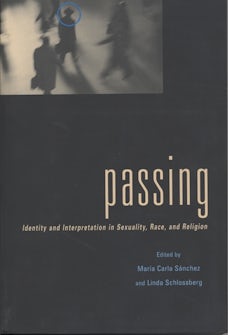Hairy Paws and Bald Heads: Anxiety and Authority in W. D. Howells’ An Imperative DutyPosted in Articles, Health/Medicine/Genetics, Literary/Artistic Criticism, Media Archive, Passing, United States on 2015-12-30 02:57Z by Steven |
Hairy Paws and Bald Heads: Anxiety and Authority in W. D. Howells’ An Imperative Duty
American Literary Realism
Volume 48, Number 2, Winter 2016
pages 95-111
James Weaver, Assistant Professor of English
Denison University, Granville, Ohio
Intensely concerned with the cultural and personal implications of miscegenation and its resultant social upheaval, W. D. Howells’ An Imperative Duty (1891) documents how late-nineteenth-century racial fears become entangled in the medical discourse of the period. Ultimately a romance that brings together the liberal-minded nerve doctor Edward Olney and the refined but tragically mulatta Rhoda Aldgate, the novel traces the ways in which Olney both contests and affirms a racially and socially conservative point of view. As Michele Birnbaum points out, the novel “narrate[s] the young woman’s coming of age as a medical condition.” We might also see Howells’ novel as the coming-of-age story of its protagonist doctor—a coming of age that relies heavily upon his personal and professional relationship with that young woman. Importantly, we can see Olney’s change over the course of the narrative not just as the expression of his developing love for Aldgate but as the incremental recovery of his professional identity. Despite the personal transformations Olney experiences during the course of Howells’ novel, his professional transformation emerges as the more accurate index of Olney’s attitude toward issues of race and class. As Olney assumes a democratic openness toward Aldgate’s “taint” of dark ancestry, he also assumes a medical authority that transforms his romance with her into a doctor-patient relationship. That relationship is further predicated on Olney’s lingering anxieties over his medical authority and economic stability as well as on a troubling erasure of Aldgate’s racial identity. Reading An Imperative Duty in light of such influential contemporary medical texts as S. Weir Mitchell’s Doctor and Patient and George M. Beard’s American Nervousness, then, enables us to see Olney’s transition from nervous doctor to nerve doctor—a distinction that, however coy, aptly indicates how Howells’ hero-doctor is able to “cure” not only his and Aldgate’s racial anxieties but also his own nagging fears about his social, cultural, and medical authority.
Recent criticism of Howells’ novel has usefully explored the ways in which it engages with the racial discourse of the time, as critics have tried to assess the race politics ultimately articulated by Howells. Many of those essays have situated An Imperative Duty against the backdrop of U.S. immigration debates and concerns over citizenship; in dialogue with developments in realist aesthetics and American pragmatism; or in relation to the tradition of passing novels, the trope of the tragic mulatto, and late-nineteenth-century fears about miscegenation. In this essay I’d like to frame my analysis of An Imperative Duty and Dr. Olney against a different cultural backdrop: the rise of “nervous diseases” and the corresponding efforts in the American medical community to organize professionally and consolidate power and privilege through its possession of scientific knowledge. By folding this consideration of Dr. Olney’s professional identity into our larger understanding of Howells’ novel, I hope to illuminate the ways in which the racial and medical discourses of the novel intersect with and reinforce one another, reasserting an entrenched white male privilege despite initially seeming to question those avenues of power.
Before I turn to Howells’ novel, though, let me contextualize that analysis by rehearsing in general terms the late-nineteenth-century medical discourse regarding neurasthenia and by outlining the power relations embedded in the diagnosis and treatment of the disease. George M. Beard first employed the term “neurasthenia” to describe a state of nervous exhaustion in an 1869 speech to the New York Medical Association. A Yale graduate and two-year veteran of the Union navy’s medical staff during the Civil War, Beard finished his medical degree at New York’s College of Physicians in 1866 and almost immediately began a focused study of nervous diseases that culminated in his 1881 text American Nervousness, his most comprehensive treatise on neurasthenia, its causes and effects, and its national significance. In that text, Beard argues against a faculty psychology interpretation of nervousness, contending that the term does not indicate “unbalanced mental organization” or “a predominance of the emotional” but rather “a lack of nerve-force.” As he writes, “Nervousness is nervelessness.” For Beard, neurasthenia was thus a strictly…
Read or purchase the article here.


